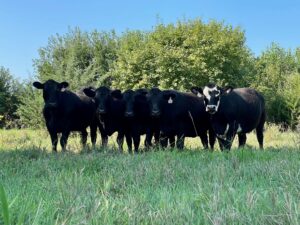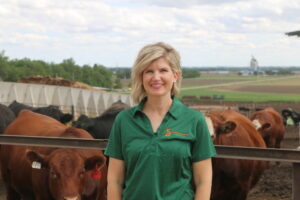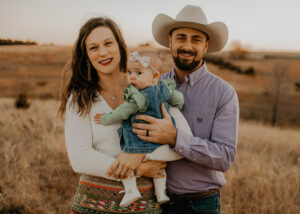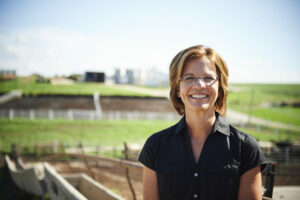UPDATE – as of August 27, 2020
It took only a few weeks for Burger King to respond to numerous farmers, ranchers and consumers about the misleading video. Instead of crediting U.S. beef producers for their steadily decreasing carbon footprint, Burger King set up animal agriculture as a villain in the climate change narrative.
Producers like me utilized social media to get accurate information to Burger King concerning methane and how cattle can benefit the environment. Farm woman, Michelle Miller (known as the Farm Babe on social media), recently met with executives from Burger King in Iowa. While experiencing firsthand the sustainability story Burger King executives also heard from Dan Thomson, chair of Iowa State University’s Animal Sciences Department, Dr. Frank Mitloehner, professor and air quality specialist in cooperative extension in the Department of Animal Science at the University of California, Davis as well as experts on animal nutrition and methane digesters. The ag experts gave the visitors a chance to learn about the sustainable beef production cycle through ongoing research and innovation.
I appreciate these initial steps made by Burger King to learn the story firsthand. Burger King says they’ve made adjustments to the video, and that their true intention was to celebrate the sustainability efforts of farmers and ranchers. Let’s hope this is an example of how important it is to make sure farmers, ranchers, researchers and professors in agriculture can always be included when the cattle to beef story is told.
It looks like Burger King has joined the conversation about methane production. I like their beef burgers. Their new commercial shows a kids version of methane from cattle. Cute, maybe. Accurate, no. The adult version can be found on farms and ranches across the United States. My husband Steve and I raise cattle, and we use science to search for the truth about how to best care for the land, our animals, the water and the food we produce.
We have learned methane is a powerful greenhouse gas but it breaks down in about 10 years into CO2. CO2 is not as potent but lasts for a 1000 years in the atmosphere. Cattle eat plants that use CO2. NASA recently discovered corn plants pull much more CO2 down than previously thought. You can read more about how the corn belt can produce 40% more oxygen than the Amazon Rainforest by clicking here. Animals, plants, the oceans and the atmosphere have a natural cycle of using the gasses produced to keep an equilibrium. Humans have increased fossil fuel use to a point of not having enough plants and oceans to offset the increase of CO2 into the atmosphere. This is where science comes in.
Science helps us continue to improve and become better stewards of our planet through innovative ideas and ongoing research. Science changes as we learn leading to continuous improvement. I challenge Burger King to become a more effective agent of change by offering scholarships to young people interested in finding innovative ways to reduce the impact of CO2 from all emission sources.
The real story about the methane released by cattle may surprise you. Please watch this video while I explain the unique circumstances that growing crops in Nebraska offer to this situation.



